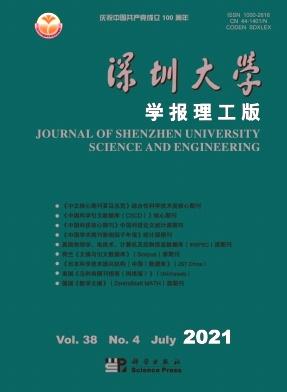Preparation and performance of hydroxyapatite-graphene oxide composite microspheres
Q4 Engineering
Shenzhen Daxue Xuebao (Ligong Ban)/Journal of Shenzhen University Science and Engineering
Pub Date : 2022-07-01
DOI:10.3724/sp.j.1249.2022.04447
引用次数: 0
Abstract
Yuan, JIAN Youliang, LI Ruilong, and WANG Tao College of Chemistry and Environmental Engineering, Shenzhen University, Shenzhen 518071, Guangdong Province, P. R. China Abstract: Drug-loaded microspheres have been widely studied and applied in biomedical materials, but there are still some open problems such as low drug loading and sudden release. In order to solve such problems, hydroxyapatite-graphene oxide (HA-GO) composite microspheres were prepared by using hydroxyapatite (HA) and graphene oxide (GO). Firstly, spherical calcium carbonate-graphene oxide (CaCO3-GO) composites were synthesized by hard template method. Then, spherical hollow HA-GO composite microspheres were successfully prepared by a method of hydrothermal-assisted ion exchange. The effect of different synthesis conditions on the prepared HA-GO composites was studied. Through a series of measurements, such as X-ray powder diffraction (XRD), Fourier transform infrared spectroscopy (FTIR), Raman infrared spectroscopy, field emission scanning electron microscope (FESEM), ultraviolet visible spectrophotometer (UV-VIS), etc., the prepared samples were analyzed and characterized. The drug-loading performance of the microspheres was tested by using curcumin as the drug-loading model, and the drug-loading performance was evaluated by two indicators of encapsulation efficiency and drug-loading capacity. At羟基磷灰石-氧化石墨烯复合微球的制备与性能研究
深圳大学化学与环境工程学院,广东深圳518071摘要:载药微球在生物医用材料中得到了广泛的研究和应用,但仍存在载药量低、突然释放等开放性问题。为了解决这些问题,以羟基磷灰石(HA)和氧化石墨烯(GO)为原料制备了羟基磷灰石-氧化石墨烯(HA-GO)复合微球。首先,采用硬模板法合成了球形碳酸钙-氧化石墨烯(CaCO3-GO)复合材料。然后,采用水热辅助离子交换法制备了球形中空HA-GO复合微球。研究了不同合成条件对制备的HA-GO复合材料的影响。通过x射线粉末衍射(XRD)、傅里叶变换红外光谱(FTIR)、拉曼红外光谱、场发射扫描电镜(FESEM)、紫外可见分光光度计(UV-VIS)等一系列测量,对制备的样品进行了分析和表征。以姜黄素为载药模型考察微球的载药性能,以包封率和载药量两项指标评价微球的载药性能。在
本文章由计算机程序翻译,如有差异,请以英文原文为准。
求助全文
约1分钟内获得全文
求助全文
来源期刊

Shenzhen Daxue Xuebao (Ligong Ban)/Journal of Shenzhen University Science and Engineering
Engineering-Engineering (miscellaneous)
CiteScore
0.90
自引率
0.00%
发文量
14
 求助内容:
求助内容: 应助结果提醒方式:
应助结果提醒方式:


